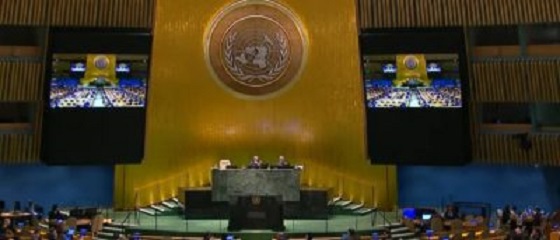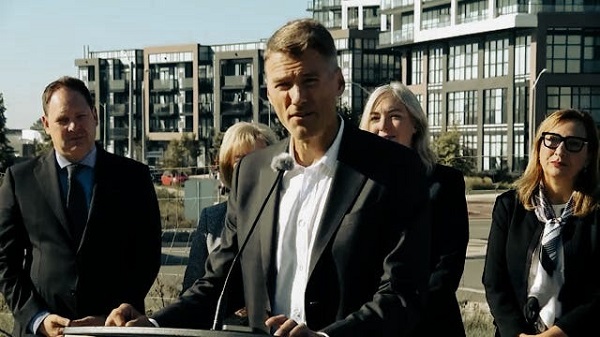Bruce Dowbiggin
Corked: The Incongruous Affection For Government Liquor Retailing
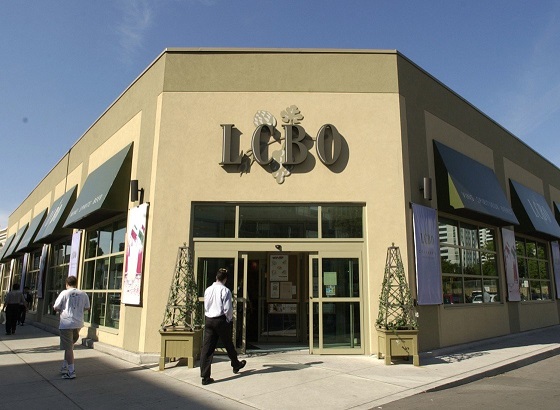
First, the nostalgia. In 1974 we worked at the (now departed) Huron and Dupont LCBO site for Xmas. In those days, when people arrived by dog sled, customers were required to consult a book, find the code that corresponded to their choice of wine or booze, and then hand the slip to a clerk (us) who would fetch the evil brew from a deep lair beneath the store.
Okay, it was from shelves beyond the view of customers. We would then return with the bottle, a cashier would process the transaction, and democracy was safe for another day. After we left, the LCBO modernized stores to allow customers to actually see the bottles they were considering (heresy). They hired clerks who actually knew something about the products, Later still they even had sales and tasting bars in fancy stores adorned in chrome and wood accents.
Those who wanted anything different could hoover to Buffalo or Rochester where the stores were often modest but the prices attractive. Different stores carried different inventories. While Ontario customers ordered rationed futures or shivered in parking lots to get a miniscule share of a hot new wine, getting product at the U.S. stores was both immediate and not rationed.
The contrast was stark. Which is where things sit today. The Ontario government (like all provincial governments save Alberta) is still in the retail business. In the day, they had about 8,000 slots for shelf-worthy products. If you wanted to purchase something else you needed a process that made finding the headwaters of the Nile seem like a casual jaunt. It’s less strenuous now, with the Ford government allowing sales in corner outlets and grocery stores.
But the LCBO remains a unionized tribute to Bill Davis’ Ontario. A polite, apologetic concession to pre-Trudeau Canada. Which is why the noisy ruckus being kicked up by the unionized employees is a downer for the Family Compact sensibilities. The people who stock shelves, operate cashes, check IDs and refuse to give you plastic bags are on strike to protect their sinecures with government. Have they no gratitude?
Union leaders are insisting that the loss of their workers will be a death blow to healthcare and education in the province. All sorts of miscreants will be allowed to escape detection in the buying process. For those of us now living in Alberta this eye-rolling claim is amusing. You see, private liquor retailing has been in effect here for decades. Different stores have different choices. Sales are an everyday feature of the experience. While the LCBO brags about its buying power you don’t see it reflected in prices. Bonus: We also can purchase Costco’s Kirkland brand wines which are cheap and delicious.

The predicted increase in crime and diminution of tax income without unionized store clerks has not happened. As Brian Lilley explains in The Sun, “Statistics Canada tracks the annual net income of liquor authorities in Canada and for fiscal year 2022-23, Alberta returned $825,104,000 to the provincial coffers. With a population of 4,645,229 as of April 1, 2023, that means the Alberta Gaming, Liquor and Cannabis Commission gave the government a per capita return of $177.62.
“That same year, the LCBO’s net income from liquor was $2,457,527,000. With a population of 15,457,075 as of April 1, 2023, the LCBO returned $158.99 per capita. Even using the $2.58 billion the LCBO remits, which includes other earnings, the LCBO’s per capita return to the province would be $166.91, which is still lower than Alberta’s return.” In short, we call bogus on the union’s claim.
But there is in government liquor sales the Canadian quality of worshipful adherence to the state. This is the polite impulse of restricting competition that has driven healthcare into the stratosphere for Canadians. Even as they wait 18 months to see a specialist or sit endlessly in a waiting room, Canadians privately welcome this as a merit badge for not accepting the two-tiered systems of Europe or the insurance-based market in the U.S.
Their suffering gives them gravitas that, as middle-class folk, they can suffer like the poor folks do, the ones whom, pace the NDP, need our empathy. The glossy brochures churned out by LCBO minions allow a frisson of pizazz but without oppressing the folks camped out in Trinity Bellwods park.

For this reason the Ford Conservatives are treading very carefully despite the evident big-foot uselessness of the current model. In the venerable Ontario government tradition of trying to be half-pregnant they don’t want to stir up the class warriors seen recently in ant-Israel demos. It’s similar in the rest of the provinces where bureaucrats have convinced elected officials that, like Jack in Brokeback Mountain, “I wish I knew how to quit you, Ennis.”
Whatever the LCBO strike result it’s a safe assumption that no one in the Canadian bureaucracy will be losing their jobs to the free market. The huge bumps in hiring since Covid show a colossus that has no intention of giving back its power to regulate. From liquor to climate Canadian politicians have ceded responsibility for areas that can be handled more efficiently and cheaply by civil servants and consultants. Kind of like CBC.

It is possible to kick the habit. The recent Chevron SCOTUS decision seeks to unpack the bureaucratic state by de-fanging its armies of in-house experts, pushing regulations and laws back to elected officials and away from the sprawling DEI-infested bureaucracy. You can tell it’s working by the torrents of complaint from redundant officials. Even more drastically, new Argentine president Javier Milei has reduced his cabinet departments from 22 to just nine.
While PM-in-waiting Pierre Poilievre talks a big game about tackling these excesses, he doesn’t stand a chance at rationalizing government services. So it’s likely he’ll have to content himself with a nice glass of beer or wine. That, under the LCBO, will cost him more than it should.
Bruce Dowbiggin @dowbboy is the editor of Not The Public Broadcaster A two-time winner of the Gemini Award as Canada’s top television sports broadcaster, he’s a regular contributor to Sirius XM Canada Talks Ch. 167. His new book Deal With It: The Trades That Stunned The NHL And Changed hockey is now available on Amazon. Inexact Science: The Six Most Compelling Draft Years In NHL History, his previous book with his son Evan, was voted the seventh-best professional hockey book of all time by bookauthority.org . His 2004 book Money Players was voted sixth best on the same list, and is available via brucedowbigginbooks.ca.
Bruce Dowbiggin
Brokeback President: We Can’t Quit You, Donald
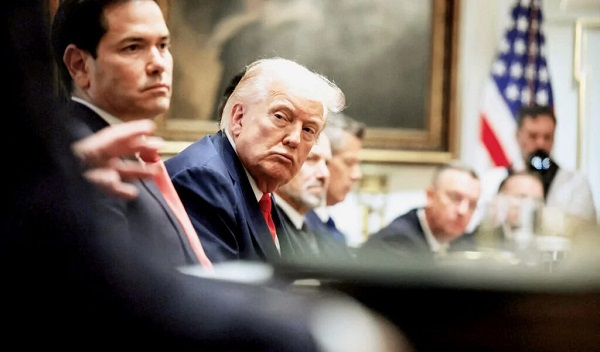
There’s a truism that the real world bears no resemblance to the worlds we imagine in our heads. From far-right patriots stockpiling guns in the mountains of Wyoming to unhinged antifa voidoids shouting “Nazi” at the McGill quad, the real world offers no resemblance to the ones they’re demonizing. The same goes for centre-middle voters who still watch the network 6 PM news or the wolves on Wall Street creating a new equity bubble..
Their assumptions are based on narratives created with themselves at the centre of an epic national struggle. In Canada, for instance, the only constants in the consciousness have been hockey and the equalization scheme. In the U.S. honouring Old Glory and the constitution is a stronger bond, but the national myth is still diffuse. Rarely have the two nations shared an animating principle.
Until this moment. Now there is a central force at work on both sides of the border. A core issue so deep and dangerous that all agree it forms the heart of their current existence. We speak, of course, of Donald J. Trump, the 45/47 POTUS. For better or worse, the cult of the Donald forms the seminal belief system in both America and Canada. He is, in the words of Mark Carney, transformational.
The reasons are not the same. For the Left Trump is the vulgar partisan leading America to ruin and perhaps civil war, For the Right he is the avenger, the fearless force for goodness who will restore America to greatness. Both sides laugh at him. For the Left it’s a derisive cackle. For the Right, it’s an affectionate chortle.

But neither side dares ignore him at the moment. Some might say, what about Obama? Wasn’t he a transforming force in his 2008-2016 presidency? Actually Obama’s overwhelming privilege in the absence of accomplishment is the reason Trump has ascended to this status. After the former leader of the Choom Gang in Hawaii had his pals curb-stomp Mitt Romney in 2012 the Right sought someone who fought dirty, too. Who’d punch back.
And they got him in Trump, who has perfected the intervention method used by Blake, the brutal salesman manager in Glengarry Glen Ross. Raw, unsparing, unforgiving. “Put that coffee down! Coffee’s for closers only. You think I’m fucking with you? I am not fucking with you! I’m here from downtown. I’m here from Mitch and Murray. And I’m here on a mission of mercy. Your name’s Levine? You call yourself a salesman, you son of a bitch?
Dave Moss: I don’t gotta sit here and listen to this shit.
Blake: You certainly don’t, pal, ’cause the good news is… you’re fired. The bad news is… you’ve got, all of you’ve got, just one week to regain your jobs starting with tonight.”
Like Trump, Blake flaunts his wealth. “This watch costs more than your car. I made $970,000 in sales commissions last year. How much you make? You see, pal, that’s who I am, and you’re nothing.”

He’s unapologetic. “I came here because Mitch and Murray asked me to. They asked me for a favour. I said the real favour, follow my advice and fire your fucking ass, because a loser is a loser!” His rude style has ended the Obama era for good.
In the wake of crushing Hamas he has rendered America’s progressive Left a stammering shell of its former self. Its Boomer demo is dazed, and its radical Left is talking insurrection. They tried to shoot him (twice), they tried to jail him. They tried to impeach him. They tried to link him to Jeffery Epstein. He was undeterred. Came back stronger as president in 2024. You may not like it, but those are the facts.
If America has a Trump fixation, it’s no less toxic in Canada where his intervention in the 2025 federal election shattered the polite conceits Canadians live with. He grabbed Trudeau by his fashionable lapels and hissed, “You’re a nice guy? I don’t give a shit. Good father? Fuck you! Go home and play with your kids. You wanna work here? Close!”
In America, this straight talk created a debate on its future. Faced with the same raw assessments of their nation as no better than a 51st state, Canadians rejected Trump’ and elected the nostalgia party of Mark Carney, flown in at the last minute to bury Trudeau’s mess. Assisted by their purchased media the Liberals avoided all talk of the country’s perilous finances, indigenous claims and separation threats. And ran on Trump.
Not much has changed since. Canadians eager to avoid self assessment have boycotted U.S. alcohol and travel. Their Laurentian elites— who months before considered their country a genocidal state— now paint rosy portraits of their land. Conservative leader Pierre Poilievre’s critical style is demeaned. All because of Trump.
Meanwhile, Carney’s Liberals gave Stellantis about $15 billion for EV battery production but failed to secure any guarantees. Stellantis now will cease plans for Jeep Compass production originally slated for Brampton Ontario, and relocate their operations to Illinois. Ontario premier Doug Ford is blaming Trump.
In spite of the repeated blows to the economy, Trump’s role as whipping boy remains unshakeable in Canada nine months after the election. We would like to say you can only blame Trump for so long. Surely the impending $100B deficit budget and talk of Alberta/ Quebec cession will stir some to stop blaming the man staging the intervention and look at themselves.
But this being Canada you’d probably be wasting your breath. Already there is talk of a snap winter election to restore the Liberal majority before the NDP choose a new leader. The bot world keeps ignoring the flames while saying what a lovely fireplace! After urging Palestinian statehood Carney scurries to the Hamas ceasefire ceremony where Trump calls him “president”.
You can’t make this stuff up, But until reality destroys the fantasy worlds in his opponents’ heads expect Blake to knock on the door to announce, “We’re adding a little something to this month’s sales contest. As you all know, first prize is a Cadillac El Dorado. Anyone wanna see second prize? Second prize is a set of steak knives. Third prize is you’re fired. Get the picture?”
Bruce Dowbiggin @dowbboy is the editor of Not The Public Broadcaster A two-time winner of the Gemini Award as Canada’s top television sports broadcaster, his new book Deal With It: The Trades That Stunned The NHL And Changed hockey is now available on Amazon. Inexact Science: The Six Most Compelling Draft Years In NHL History, his previous book with his son Evan, was voted the seventh-best professional hockey book of all time by bookauthority.org . His 2004 book Money Players was voted sixth best on the same list, and is available via brucedowbigginbooks.ca.
Bruce Dowbiggin
Long-Distance Field Goals Have Flipped The Field. Will The NFL Panic?

It is a day that lives in infamy for Buffalo Bills fans. Jan. 27, 1991, with Buffalo against the New York Giants in Super Bowl XXV. Behind 20-19 with eight seconds left, Scott Norwood, a former All-Pro, attempted a 47-yard game-winning field goal. The kick was, in the immortal words of Al Michaels, wide right.
In the days of the Bills’ four consecutive losing trips to the Super Bowl a 47-yard field goal was within the range of an All Pro kicker. Still it was considered anything but automatic. And kicks of over 50 yards were moon shots with a high degree of failure. Sixty yards? Please, don’t make us laugh.

But as anyone watching field goals in the NFL and CFL can attest the distance barrier has been shattered. NFL kickers are making 72.5 percent of field goals from at least 50 yards. Four kicks have been made from at least 60 yards — one shy of the single-season record. Tampa Bay’s Chase McLaughlin hit a 65 yarder against Philadelphia in Week 4, one yard short of Justin Tucker’s record set in 2021.
Last Sunday Evan McPherson of Baltimore hit a 67-yarder that was wiped out by a late timeout called by Green Bay’ HC Matt LaFleur. (Jacksonville Jaguars kicker Cam Little hit a 70-yard field goal, but it was in preseason and not an official record.)
What makes this onslaught more interesting is that the record for longest FG in the NFL had stood 43 years from Tom Dempsey’s game-winning 63-yarder in 1970 against Detroit for New Orleans. (Dempsey, who has no toes on his right foot wore a special kicking boot.) It took Matt Prater and the light air of Denver to establish a 64 yarder on December 8, 2013. Since then it’s been bombs away.
Dallas’ Brandon Aubrey is the current king of effortless distance, regularly pounding them through from over 60. Many expect him to break the 70-yard mark. (Airlines have movies on flights that long.) No wonder then that the NFL has set records in each of the last four seasons for 50-yard field goals. The total of 195 in 2024 was double the total from every NFL season until 2015.
The combination of distance training plus a few new rules has revolutionized game strategy in today’s game. With the so-called Dynamic kickoff rules forcing more returns, teams are regularly starting drives at the 35- or 40-yard line. In late-game situations top quarterbacks like Buffalo’s Josh Allen or Kansas City’s Patrick Mahomes need to get only a couple of first downs to get in the range of their kickers.

Now, a TD with under a minute left is not the death sentence for teams with one of the better kickers— as Bills fans will remember from their crushing loss in the AFC championship game to the Chiefs in 2022. The game featured 25 points scored in the final two minutes of regulation. The Chiefs took just 11 seconds to get to Harrison’s Butker’s range for a tying 47-yard field goal, then won in overtime.
Once the kicker played another position. Today they are specialists. The science of kicking has also improved with a plethora of kicking camps and coaches springing up to train the latest generation of long-distance drivers of the ball. With only 30 jobs in the NFL the competition is fierce, and only the very best get even a look at the pros, let alone s job. But with the money paid to a steady kicker there are thousands each year refining their craft and strengthening their techniques to get a sniff.
Another innovation improving distance was the league allowing teams to prepare their own kicking balls for games. Now they receive a supply of 60 game balls before the season to use in games. 49ers kicker Eddy Pineiro estimates the broken-in balls add maybe three or four yards to the distance on kicks. The rules stipulate that no artificial heating, stretching or inflating are allowed but Jets kicker, veteran Nick Folk, says that it gives him. Comfort zone.
“We get to kind of do just like quarterbacks get whatever they want to do to the ball, as long as it looks like a football and the logo’s still there and all that stuff,” Folk told AP. “I think they’re pretty lenient with that. It’s a very welcoming thing to be able to kind of look at a ball and be like: ‘All right, I want to kick this one this week, I want to kick this one this week.’”
In the CFL the place-kicking game is about to get a big shock as the league moves goal posts from the goal line to the back of the new, smaller end zones. Kickers will now be forced to kick much further for three points, while offences will play on a smaller field that requires more emphasis on TDs.
Paul McCallum stroked a 63-yard to set the league’s record, and like the NFL, CFL kickers are constantly pushing their range in a league with only one indoor surface. Unlike the NFL, the CFL allows PKers to use a tee. Suffice to say the reconfigured field will take getting used to. (Already traditionalists are fuming.) At least we don’t have the rouge on missed FGs to kick around any more.
For now the quest for a 70-yard field goal continues. The question will be how does the NFL react to re-balance the field’s dynamics to protect the integrity of scoring.
Bruce Dowbiggin @dowbboy is the editor of Not The Public Broadcaster A two-time winner of the Gemini Award as Canada’s top television sports broadcaster, his new book Deal With It: The Trades That Stunned The NHL And Changed hockey is now available on Amazon. Inexact Science: The Six Most Compelling Draft Years In NHL History, his previous book with his son Evan, was voted the seventh-best professional hockey book of all time by bookauthority.org . His 2004 book Money Players was voted sixth best on the same list, and is available via brucedowbigginbooks.ca.
-

 Business4 hours ago
Business4 hours agoQuebecers want feds to focus on illegal gun smuggling not gun confiscation
-

 Energy1 day ago
Energy1 day agoMinus Forty and the Myth of Easy Energy
-

 Uncategorized1 day ago
Uncategorized1 day agoNew report warns WHO health rules erode Canada’s democracy and Charter rights
-
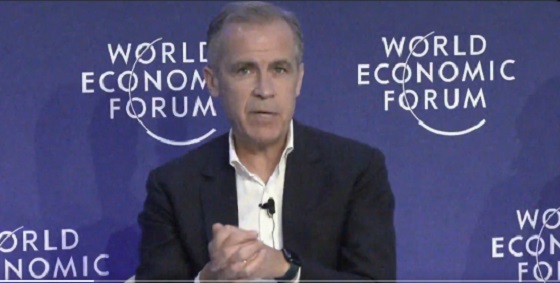
 Business5 hours ago
Business5 hours agoEmission regulations harm Canadians in exchange for no environmental benefit
-
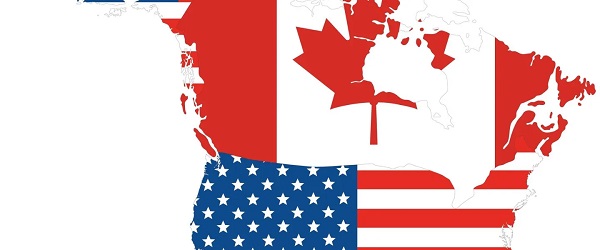
 Business1 day ago
Business1 day agoUS government buys stakes in two Canadian mining companies
-

 Crime23 hours ago
Crime23 hours agoFrance stunned after thieves loot Louvre of Napoleon’s crown jewels
-

 Courageous Discourse2 hours ago
Courageous Discourse2 hours agoNo Exit Wound – EITHER there was a very public “miracle” OR Charlie Kirk’s murder is not as it appears
-

 Frontier Centre for Public Policy2 days ago
Frontier Centre for Public Policy2 days agoOttawa Should Think Twice Before Taxing Churches


